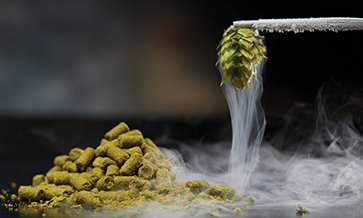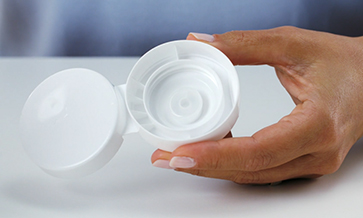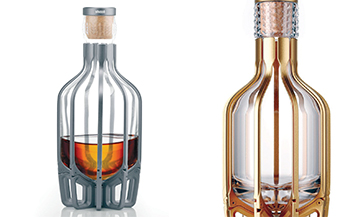An award-winning, patented technology from Los Angeles-based Lost Spirits Distillery, capable of reproducing the chemical signature of a 20-year-old rum or whisky in 6 days, is coming to India
For most dark spirits like whisky, rum and cognac, maturation is the key. High temperatures and/or wide temperature variances are not very beneficial for the ageing spirit.
The flip side of hot climates is that the whisky matures faster; but with it comes a higher loss of whisky through evaporation from the barrel, known in Scotland as the “Angel’s share”. The annual loss from the phenomenon is around 3% in cold climate, compared to up to 8% in the warm weather in Goa.
High temperatures are a common factor between India and the US, which makes it challenging to mature spirits for longer periods of time – which is why it’s unlikely you’ll see a whisky from America or India aged for more than 10 years.
Coupled with this is, of course, the considerable expense associated with seeing large quantities of that precious liquid evaporate every year.
The bulk of the flavour of these dark spirits and all colour (apart from permissible added colours) comes from the time they spend maturing in barrels, and the kind of barrels used has become a major point of differentiation, especially for the Scotch whisky industry.
Most whisky companies are now going in for extra maturing, in which the liquid spends more time (post-maturation) in a cask which has previously been used to mature other liquids, such as rum, cognac, red wine or even beer.
Lost Spirits
Bryan Davis and his business partner, Joanne Haruta, both of Lost Spirits Distillery in California, have been distilling and tinkering with spirits for quite a while, including numerous experiments on how to accelerate the ageing process.
When whisky is kept for maturing in oak barrels, over time the wood also gradually decomposes, lending flavour to the liquid.
Their primary motivation is that as a new (age) distillery, they didn’t want to wait 10-20 years to get the desired end results, with the cost savings from the accelerated process being a happy by-product. After numerous laboratory experiments to mimic the chemical signature of a 20-year-old rum, the Eureka moment came.
Epiphany struck Bryan when he saw an old wooden deck at the distillery, which was falling apart in the sun – which meant that the wood polymers had been decomposing in the light. After that realisation, he set up a series of experiments to see if the wood decomposition could be accelerated disproportionately (at log scale) with increasing light intensity.
The answer turned out to be ‘Yes’! “Once that technique was combined with a previously developed technique to force esterification, we could effectively make old whisky, rum or brandy in a matter of days,” Bryan says.
Esterification of oak
This led Bryan to develop this technology further and, in fact, go on to patent it. Its manifestation is a reactor, which wouldn’t look out of place in an Avengers movie. The multi-phase process helps accelerate the ageing process to ensure that a process which could take between 10-20 years is now done within the space of a week.
When whisky is aged conventionally in oak barrels a number of reactions take place. A reaction, called ‘esterification’, chemically binds alcohol molecules to weak acids naturally found in the whisky, forming potent flavour compounds called ‘esters’.
The wood itself slowly decomposes, shedding new flavour compounds as well as precursors to other esters. The precursor compounds from the decomposing wood undergo the esterification reaction forming many new flavour compounds.
The technology works by triggering each one of those reaction sets in order to arrive at a substantially similar chemical composition. It is done by:
- Using super-high-intensity light to decompose the wood rapidly
- At the same time it traps the decomposition products in the whisky
- Carefully managing the temperature to facilitate the binding of the decomposition products to the alcohols.
“The delicate part is timing – it has to be just right so as to match the ratios you find in old whisky. Ironically, it still remains as much an art as a science,” Bryan adds.
Big disruptor
This is a technology that can work as a disruptor in the alcobev industry globally. Last week I sat with Roshini Jaiswal, scion of the Jaiswal family, founders of Jagatjit Industries, and also Chief Restructuring Officer of the group. She poured out for me a shot each of the first two products from Lost Spirits: their Navy Style rum and the peated malt called Abomination.
In both cases, it was hard for me to distinguish, from the colour, flavour or palate, that these were the end products of a technologically driven process, rather than years of maturation in a cask.
So also it seems for Jim Murray, Whisky Guru, and author of an authoritative Whisky Bible every year who, in 2018, awarded Abomination with a prestigious Liquid Gold award!
Lost Spirits Technology (LST) is not just available for in-house use, but can be licensed by anyone who so wishes – that is the opportunity that Jagatjit Industries spotted.
Roshini was on the lookout for breakthrough or disruptive technologies in the alcobev space, and her research led her to Lost Spirits, prompting her to open discussions with them, and eventually take an equity position in the firm.
Jagatjit Industries is one of India’s oldest alcoholic beverage firms, with its roots dating back to 1944, and with a large core manufacturing location in Hamira, Punjab.
Business bounty
Lost Spirits will also set up its technology in a scaled up version at Hamira, enabling Jagatjit to offer this as a third-party service to liquor companies. The facility is believed to come up in around a year.
“Through this investment, we have also entered into an agreement with LST specifically for the Indian market. We will not only use this technology to improve our own product portfolio (and reduce costs at the same time) but will also license this technology to others in India,” Roshini says.
“This will also exponentially grow India as an export hub. This is a significant strategy for our future to remain sustainable, designed to strengthen Jagatjit Industries, and to create long-term value for our shareholders and stakeholders across the value chain,” she adds.
Lost Spirits Distilleries is also in a process of scaling up its facility in Los Angeles, as its current products are sold out and on back order.
Talking about the association, Bryan says, “India is the world’s largest individual whiskey market. So, for Lost Spirits, choosing a technology partner in India was a very important decision. We ultimately chose to work with Jagatjit Industries for a variety of reasons.
“We were seeking a partner with both the manufacturing and distribution capability to follow through at scale and a management style compatible with our board of directors. We believe we found the right partner in Jagatjit and Roshini. After working together for the past 18 months, we are delighted to see the project progress and excited to share the forthcoming developments,” he adds.
I for one, am looking forward to the first products take shape in India, as also visit Los Angeles at the earliest, to visit the original Lost Spirits Distillery. Its distillery tour is also a winner of the World’s Best Distillery Tour.













